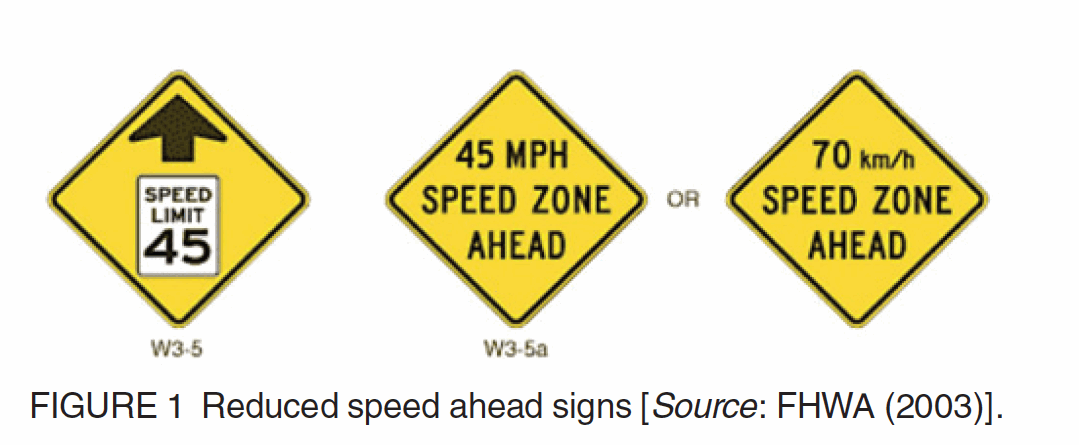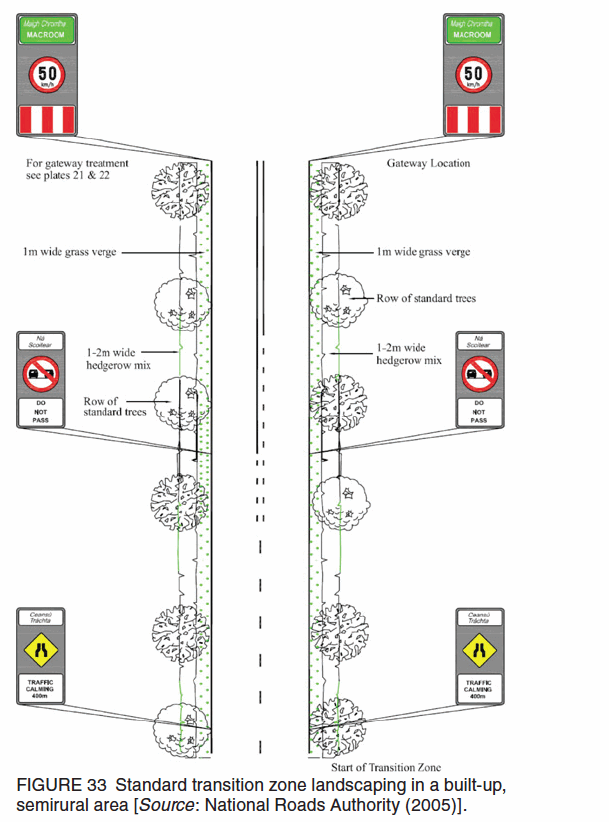TRANSPORTATION RESEARCH BOARD
North America’s rural landscape is dotted with isolated settlements, villages, and small towns that are typically located on rural roads where the general speed limit is 55 to 60 mph (90 to 100 km/h). Motorists are expected to slow down as they pass through these settlement areas, reducing their operating speed to 30 or 40 mph (50 or 65 km/h) in sections of road known as transition zones. In designating and designing transition zones, the ultimate goal is for motorists to reduce their speed in the transition zone to the point where they reach the lower speed limit at the start of the settled area. However, several factors thwart the goal of using transition zones to reduce driver speeds in settlement areas, including speed adaptation (the tendency for motorists to underestimate their travel speeds after having driven at a higher speed for a prolonged period) and the generally abrupt change from the rural road to the town or village streetscape. As a result, state departments of transportation (DOTs) and other agencies are interested in developing more effective speed reduction techniques for transition zones.
At present, there are no national North American design guidelines for rural speed transitions, except for the general guidance provided on reduced speed ahead signing in the 2003 Manual on Uniform Traffic Control Devices (MUTCD). However, most existing transition zone design guidelines from the literature reviewed for this study are generally consistent in providing the following information:
- More extensive and aggressive measures tend to produce greater reductions in speed and crash occurrence than less extensive and passive measures.
- There needs to be a distinct relationship between a settlement speed limit and a change in the roadway character.
- No one particular measure is appropriate for all situations. Each settlement must be assessed and treated based on its own characteristics and merits.
- To maintain a speed reduction downstream of the transition zone, it is necessary to provide additional measures through the village. Otherwise, speeds may rebound to previous levels as soon as 820 ft (250 m) from the start of the lower speed zone.
There is clearly a need for better and more information concerning rural high-to-low speed transitions. This synthesis report is a preliminary step in that direction.
Download full report (PDF): Speed Reduction Techniques for Rural High-to-Low Speed Transitions
About Transportation Research Board
www.trb.org
“The mission of the Transportation Research Board is to provide leadership in transportation innovation and progress through research and information exchange, conducted within a setting that is objective, interdisciplinary, and multimodal.”
Tags: Department of Transportation, Rural, Transportation Research Board








 RSS Feed
RSS Feed